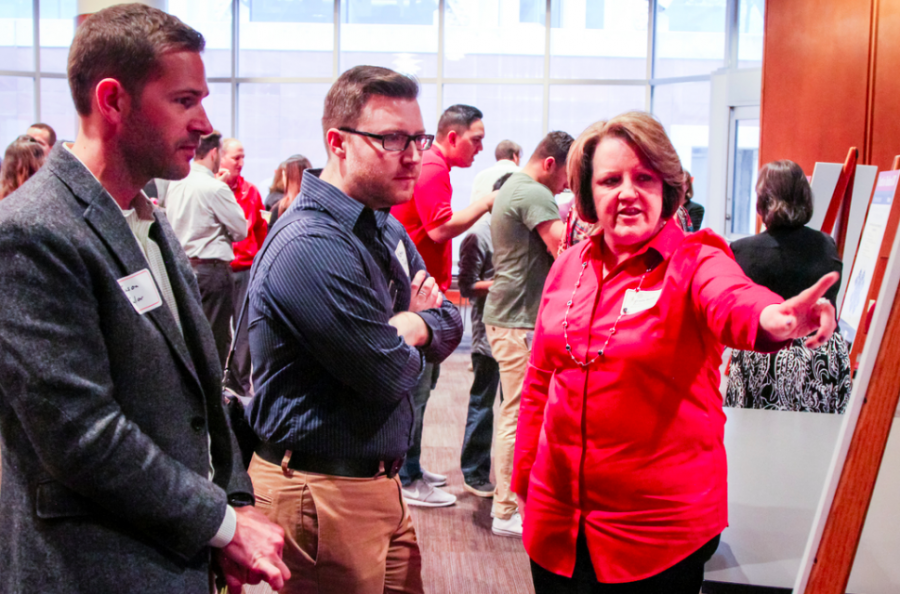Another year, another tuition hike.
At a meeting on March 14, the Board of Trustees voted on a 3.9 percent raise in the cost of tuition and student fees for undergraduate students at the University of Utah. That number breaks down to a three percent increase in tuition and a 0.9 percent increase in general student fees.
In the 2016-2017 academic year, the cost of tuition for a full-time student was $7,680 for residents and $24,276 for out-of-state students. Averaged out, full-time, in-state students can expect to pay about $300 more in tuition and fees next semester, while non-residents can expect a $947 increase.
Where’s It Going?
On Tuesday, the Marriott Library hosted a “Truth in Tuition” open house for students to ask questions about how their tuition dollars are being used.
Sandy Hughes, director of accounting and finance, said most money goes towards paying professors, U employees and graduate students. Of the increase, Hughes said the money is expected to go mainly towards resources for academic advisors, including software upgrades. “Advising is a big deal,” she said.
According to a breakdown by the Associated Students of the University of Utah (ASUU), student fees account for $554 of what students pay now, which will raise ten dollars next school year. This increase is going towards fine arts ($5.50 increase), the student media council ($2.82 increase) and computer fees ($3.43 increase). The athletic student fee will decrease by $3.
Of hundreds of dollars in fees students pay, a significant portion of this goes towards computing fees. Stephen Hess, chief information officer (CIO) for University Information Technology, said this allotment of funds matches the needs of students. “We did a student survey to find out what they do and do not use, and what the money ought and ought not be used for,” Hess said. “So that’s inputted into the process.”
Hess said the $116 students currently pay in computing fees goes towards improving WiFi on campus, renovating computer labs and, partially, funding software programs like Adobe and Microsoft Office that are free to U students. “[The software] is, in part, paid for by students.”
The U’s emphasis on computing matches with trends throughout the country, said Scott Sherman, a special assistant to the CIO. “I would say that, in the past few years, we have seen information technology become a core part of almost every piece of curriculum on campus,” he said. “So what we need is an increasing of [information technology] resources.”
A recently dismissed lawsuit involved two former University of Utah employees who claimed they were fired for revealing instances of misused funds by University Information Technology. Hess said he is confident that funds are being used appropriately and to the advantage of students.
Worth It?
With tuition rates, at the U and elsewhere, slowly but steadily rising year after year, many students are left wondering whether it is worth it to bear the brunt of the cost. It is, said Jack Hattaway, whose formal title is “master of the obvious” in the Office of Budget and Institutional Analysis. “Number wise, we compare quite favorably [to Pac-12 schools],” said Hattaway. “I think, by and large, the university provides a good educational value.”
“We are one of the lower cost schools in the Pac-12,” agreed Brenda Burke, the executive director of scholarships and financial aid. She said that, in addition to tuition hikes, the Board of Trustees approved increases in federal funding for need-based students. “The Pell Grant has gone up,” Burke said. “Our overall federal allocation of funds has gone up as well.”
Mark Winter, the executive director of budget and analysis, cited independent reports that, he said, paint a positive picture of the U. A 2015 report from The Economist ranked the school 81st in the nation based on how students fare after graduating. The expected and median earnings of a University of Utah graduate, as of 2015, is $43,833 and $49,300 respectively.
When asked about what improvements could be made, Winter said the U is always looking to boost graduation rates. About 62 percent of U students graduated within a reasonable time in 2016, compared to 49 percent of students nationally and 79 percent of Brigham Young University attendees. “We want more students to graduate and we want them to graduate quicker,” Winter said. “Having the lowest rate doesn’t do any good if your students don’t graduate.”
c.richards@dailyutahchronicle.com



KB • Mar 27, 2017 at 8:02 am
Sadly this tutotion increase is going to raise pay check levels of staff and faculty due to intrest rate hikes and lack of pay increase over many years for some. I say sadly because I don’t believe students are getting paid more at their jobs but still rent goes up throughout the state still too of course.